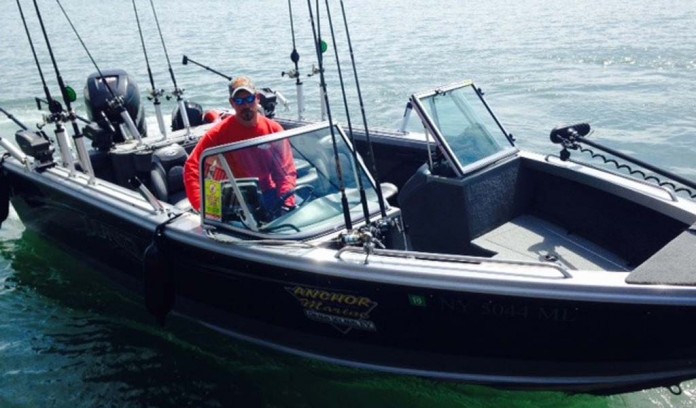With just a few miles separating most of us from some of the best fishing opportunities in the eastern part of the nation, namely, the Great Lakes, and more specifically Lake Erie, the question is often asked about a minimum size boat and an appropriate amount of horsepower a newbie Lake Erie angler might need to be safe.
I’ve heard the question countless times and my answer has never changed. Boating on Erie is more about the use of common sense, respect for the lake and its well-earned reputation for quick change, and use of dependable equipment than it is about the size of a boat.
One can feel safe in a thirty-footer, typical for a charter operation, or one can feel just as safe in a smaller outfit that is operated by a boater with a smart “distance to shore limit,” reliable gear, and a good weather forecast.
Distance factor
Note please, that I listed distance to shore, not distance from shore. To this long-time Lake Erie fan, safety on the big water is about how long it would take to get off the water if in fact, bad weather is expected or already approaching.
I recently had the enjoyable experience of fishing with New York Captain Matt Yablonsky, a popular and in-demand fishing guide who runs out of several ports ranging from Buffalo, to public launches along the Niagara River, and even to the western-most reaches of Lake Ontario.
Now wait a minute, don’t salmon, walleye, and trout guides who fish the big waters of Lake Erie and Lake Ontario operate from the seemingly high and dry comfort of a big, hardtop 30 foot craft?
Smaller boat
Almost all do, but Yablonsky prefers to hold court on his 20-foot aluminum, open-bow runabout, a craft that he dunks every morning from a launch ramp located nearest the current fishing action.
An oddity in the total picture of big water fishing guides, but a niche that has served Yablonsky and his countless clients well for years past and what is expected to be years ahead.
Yablonsky has a fish-producing list of what he would call, “small boat advantages,” a list that includes the ability to follow the action which can change daily and sometimes hourly.
And, he said, his unique offering of real charter trips to a single customer or any number up to four at a cost that he adjusts accordingly.
Yablonsky said that he understands that clients can’t always get a group of four together to share the cost of a trip and that for the most part, big boat charters are at a set price which carries a heavy burden for just one or two customers.
Other advantages for small-boat anglers, especially those who trailer their boats, are the lack of a hefty seasonal dockage fee and a fraction of the daily fuel cost attached to a large vessel.
Safety equipment
Small boat big-water anglers need to be well equipped with communication and navigational electronics just like big boats. And, too, it takes thoughtful and efficient fishing rod placements and gear access.
So what is the minimum size for big water fishing? There is none but don’t kid yourself. Small, underpowered boats will get you out but may not be up to the task of getting you back, in front of an approaching storm.
No guarantees
It’s like ice fishing where no ice is guaranteed safe.
The Edmund Fitzgerald, a world class freighter claimed by Lake Superior in 1975 during what might be called today, a perfect storm, measured 729 feet from bow to stern.
So there. Winds make waves. Wind speed and duration builds waves. And fetch, the distance of open water over which winds blow, is the perhaps the real bully. The greater the fetch, the higher the waves.













